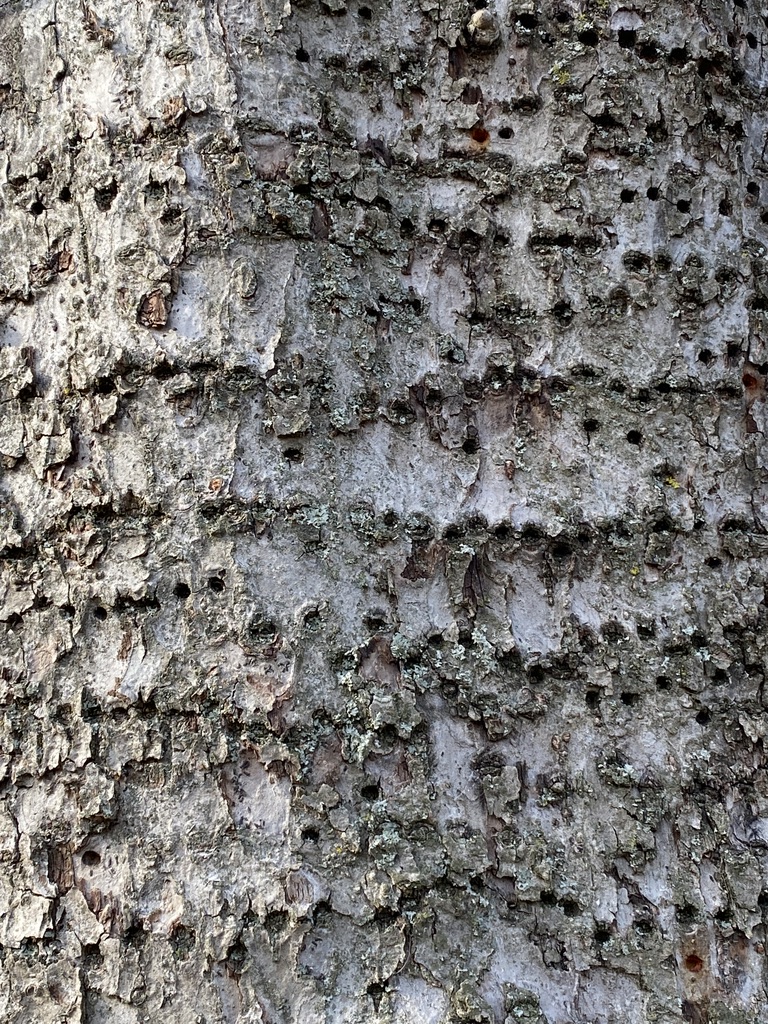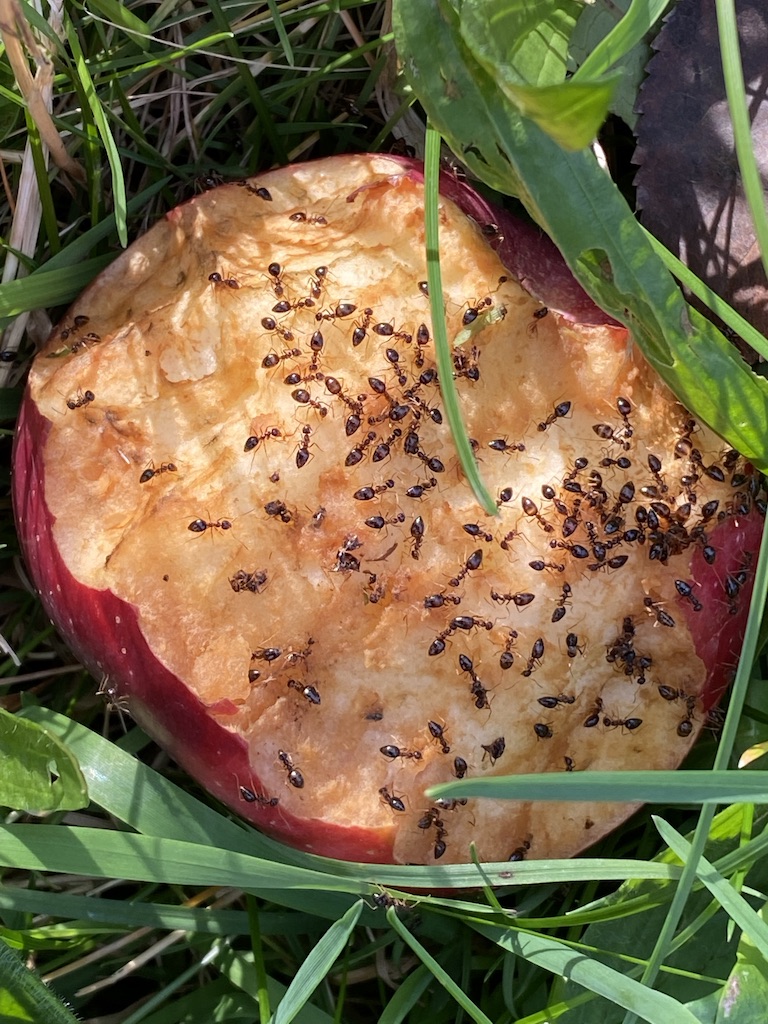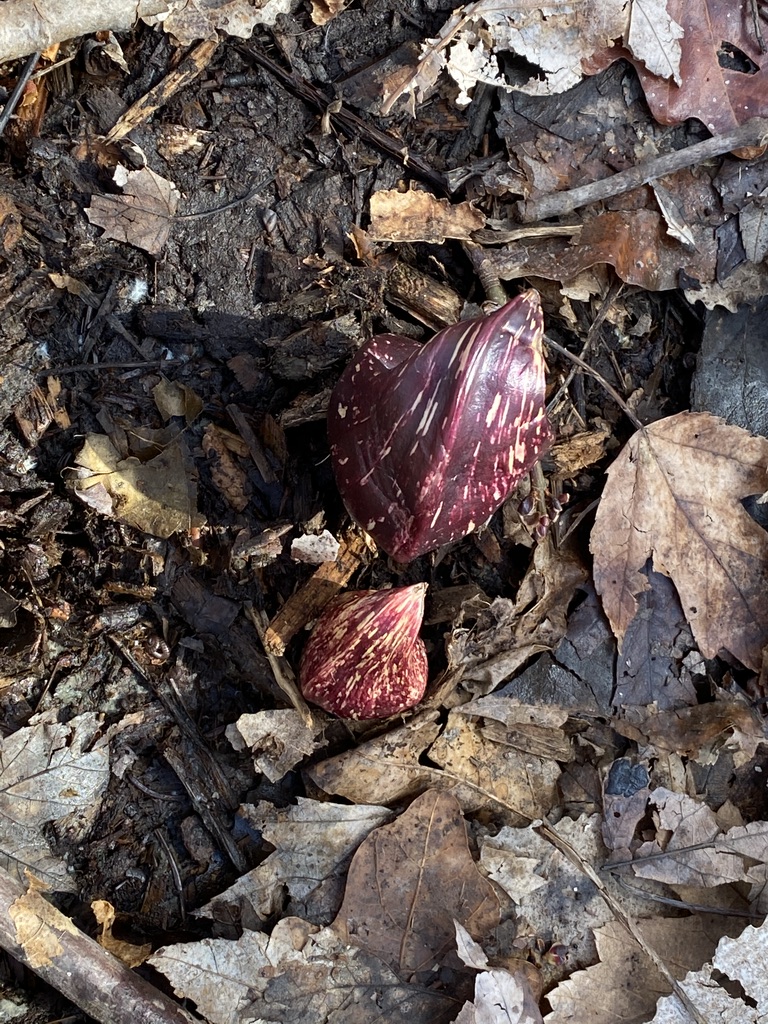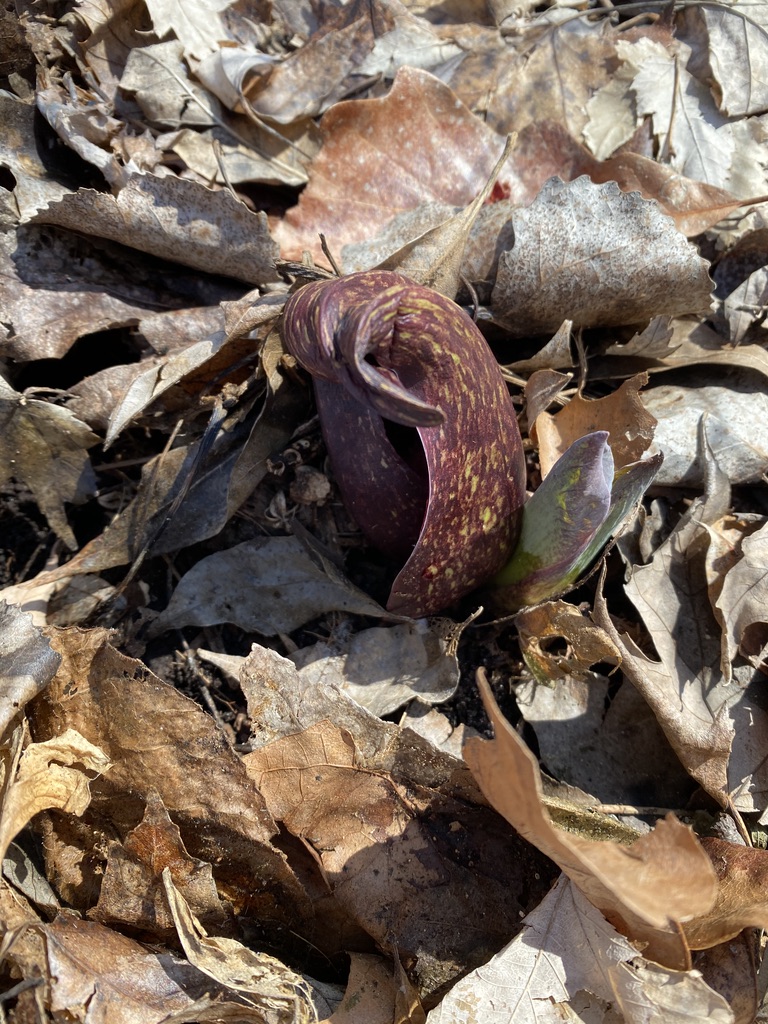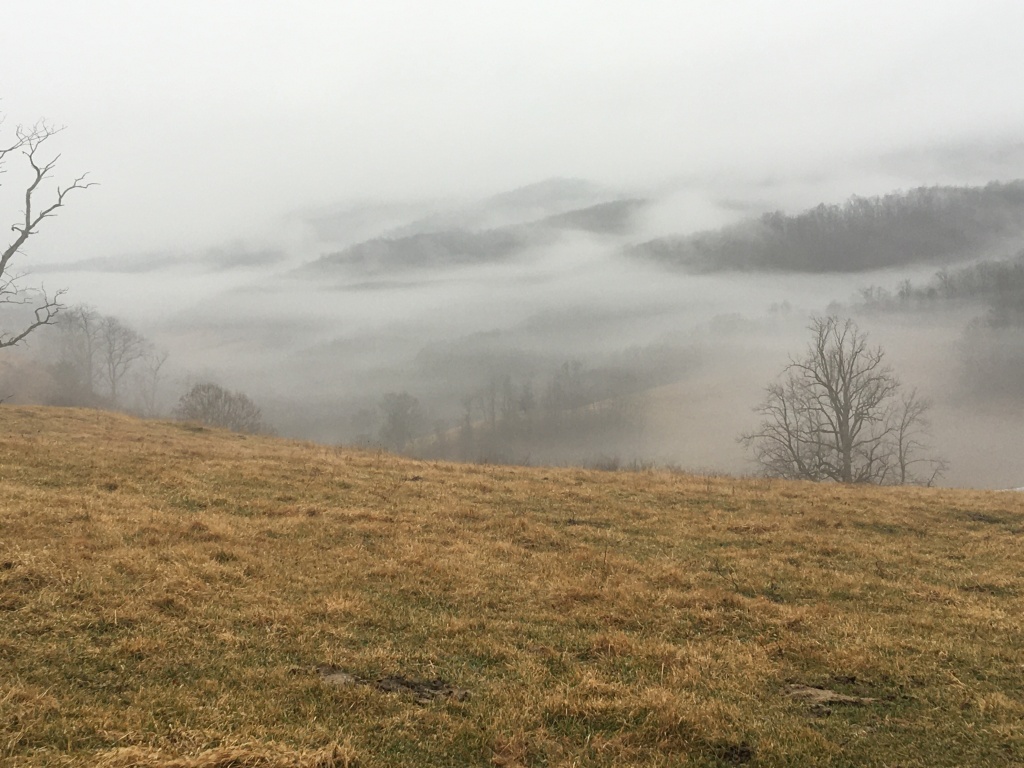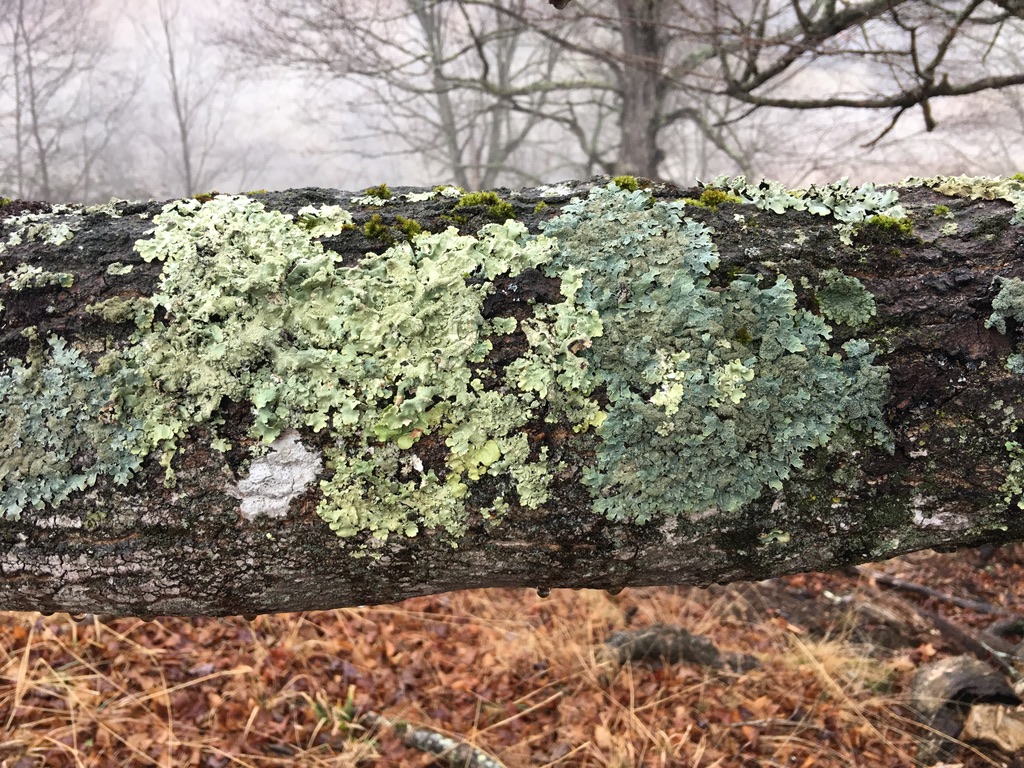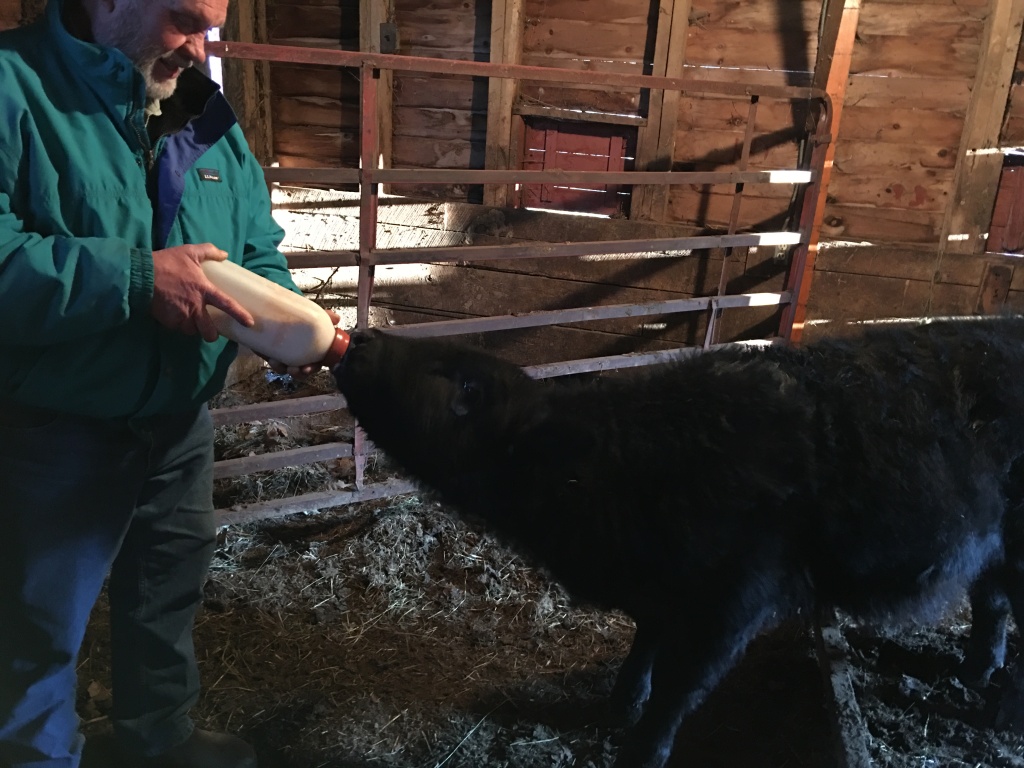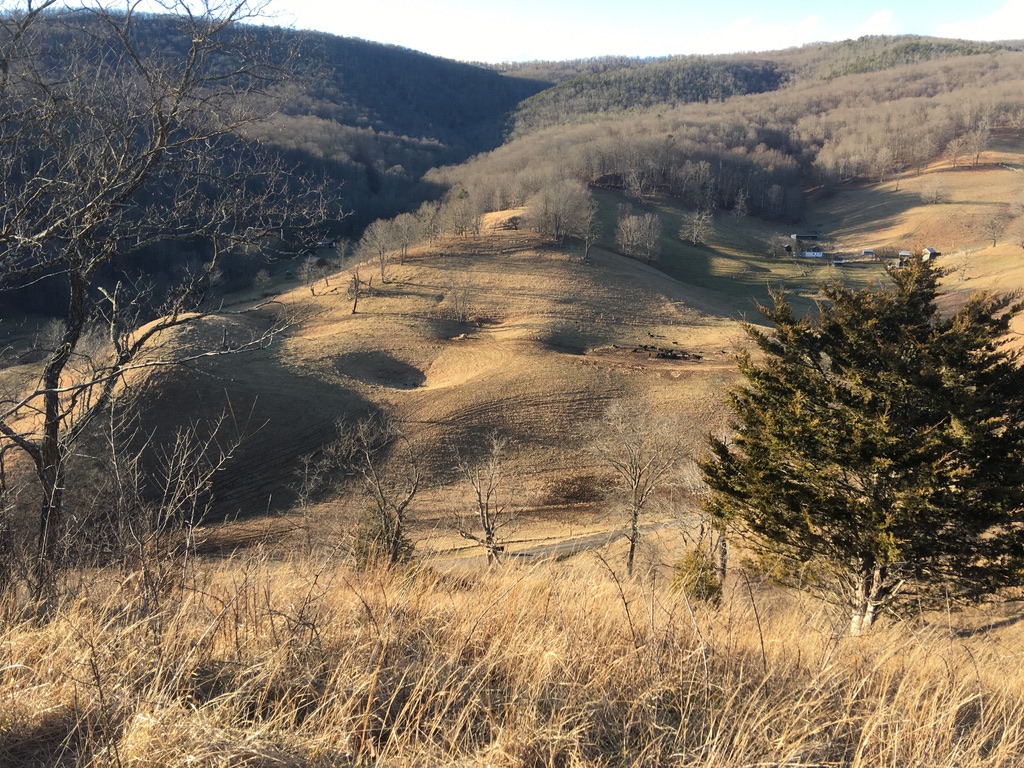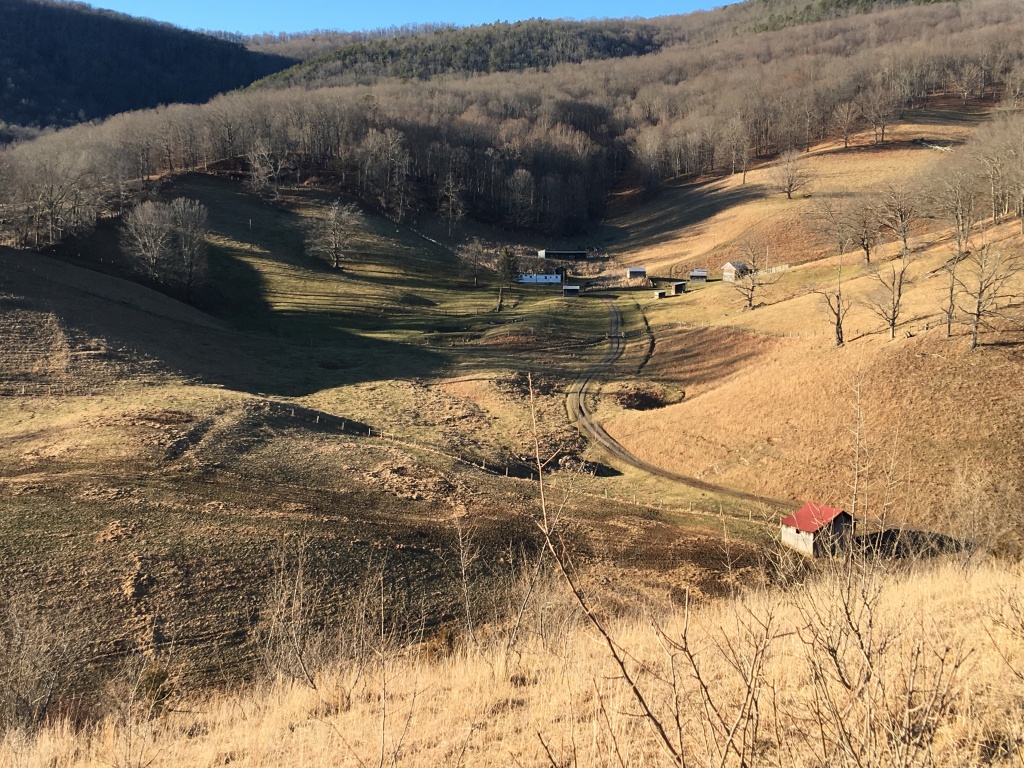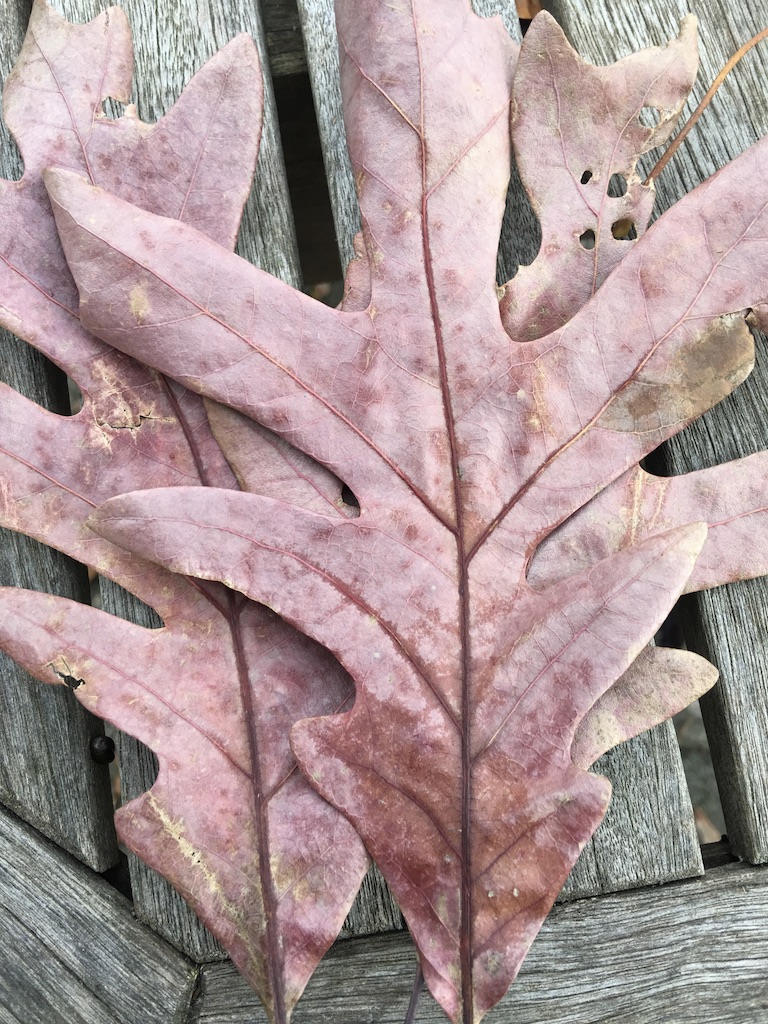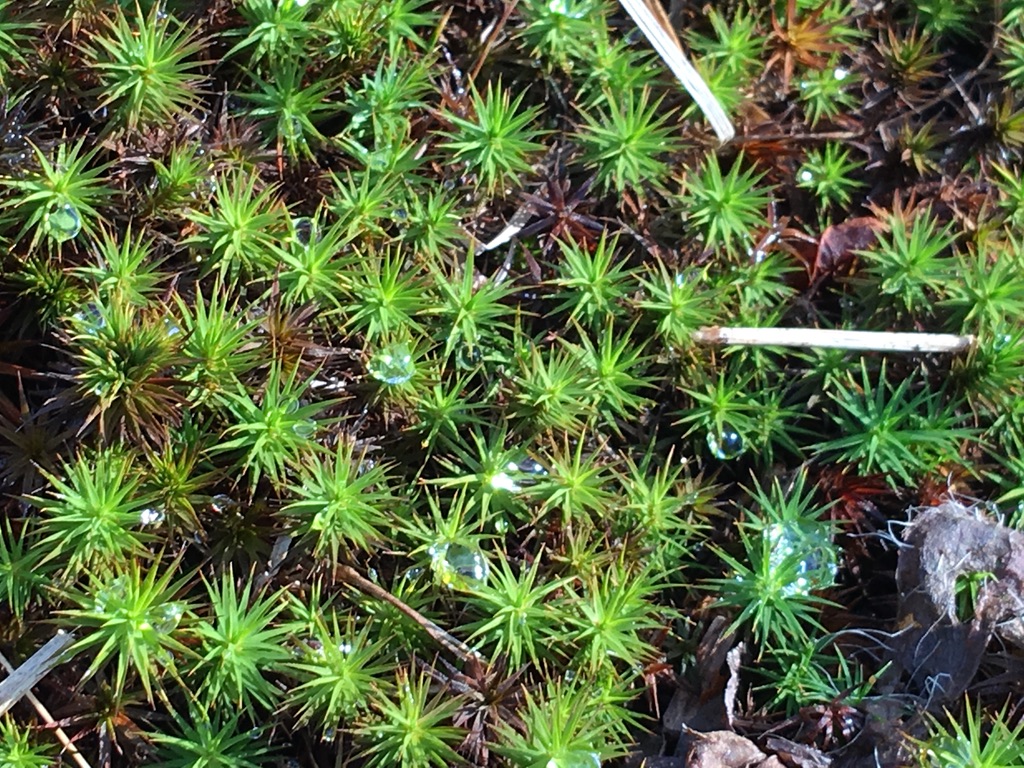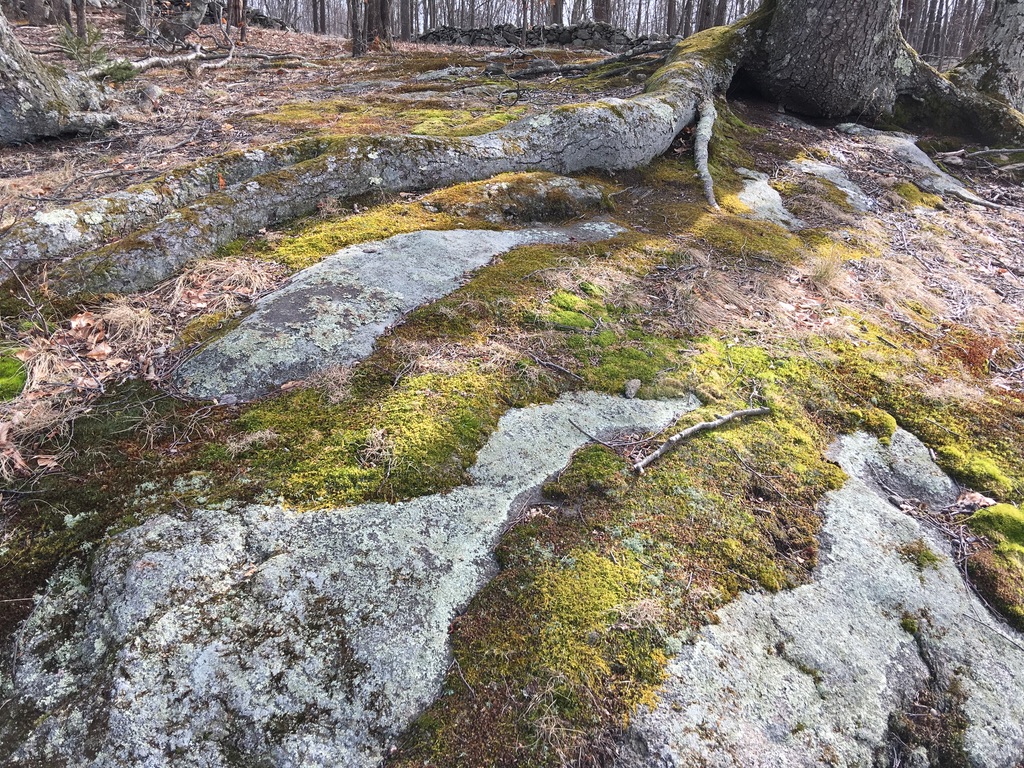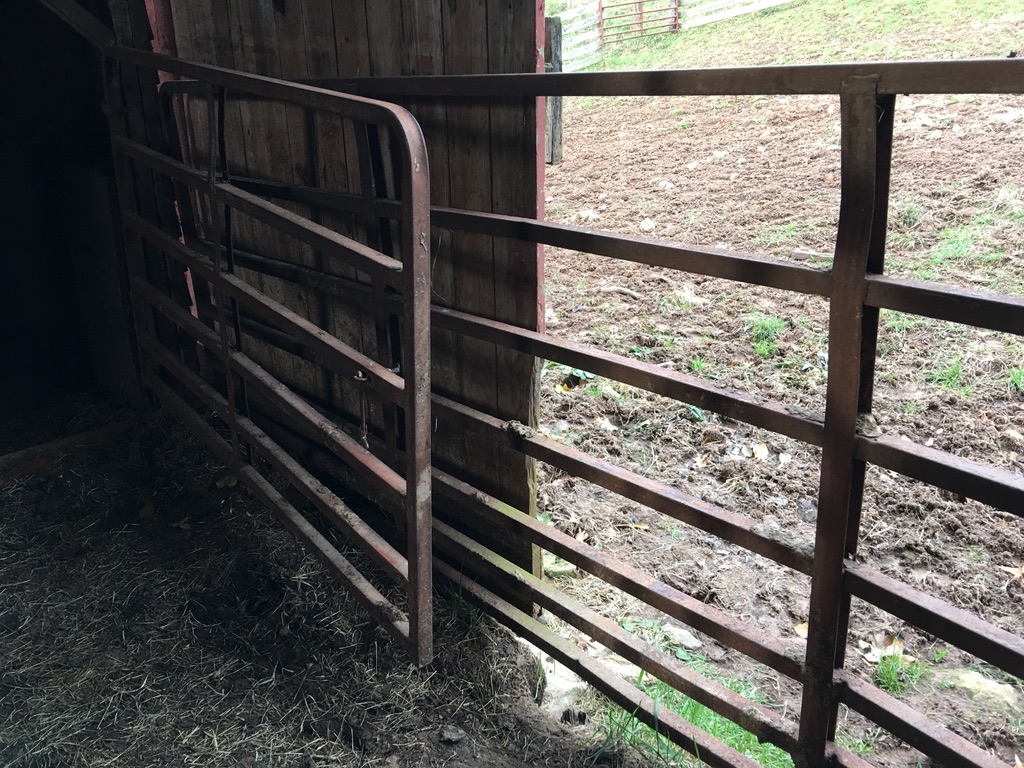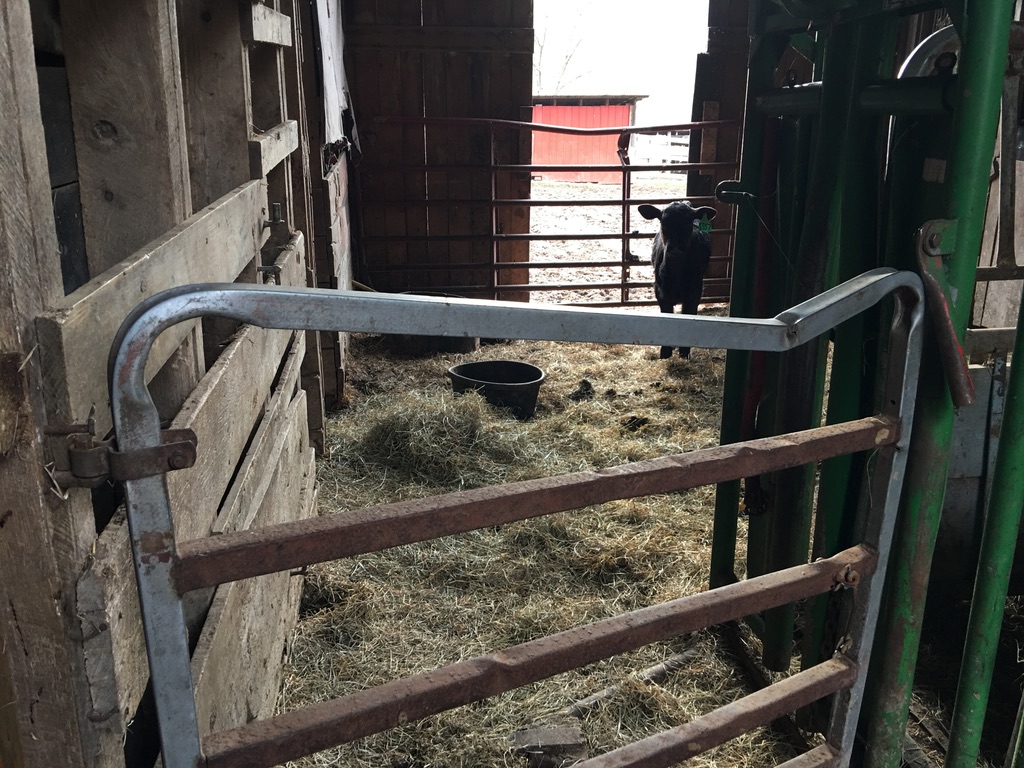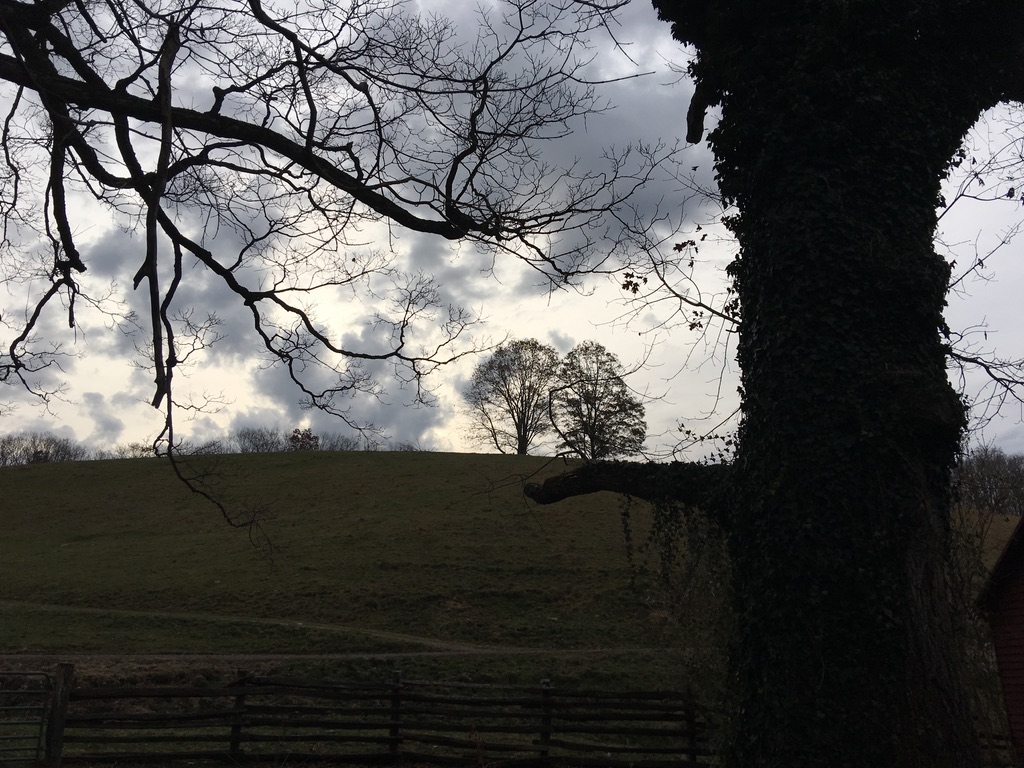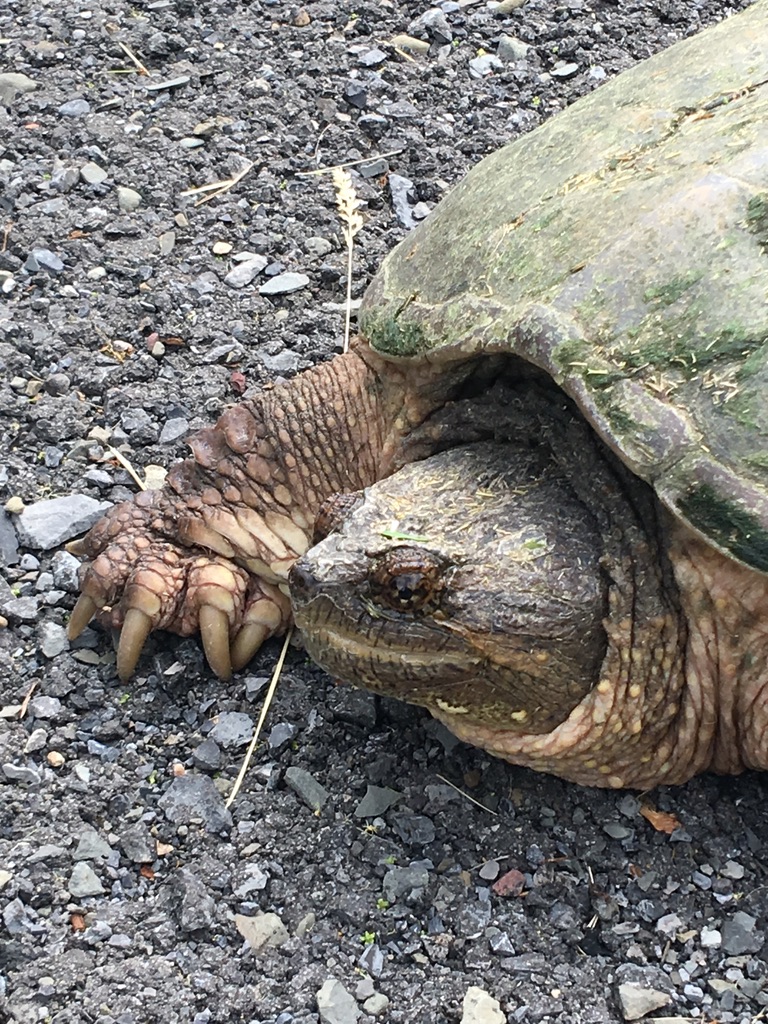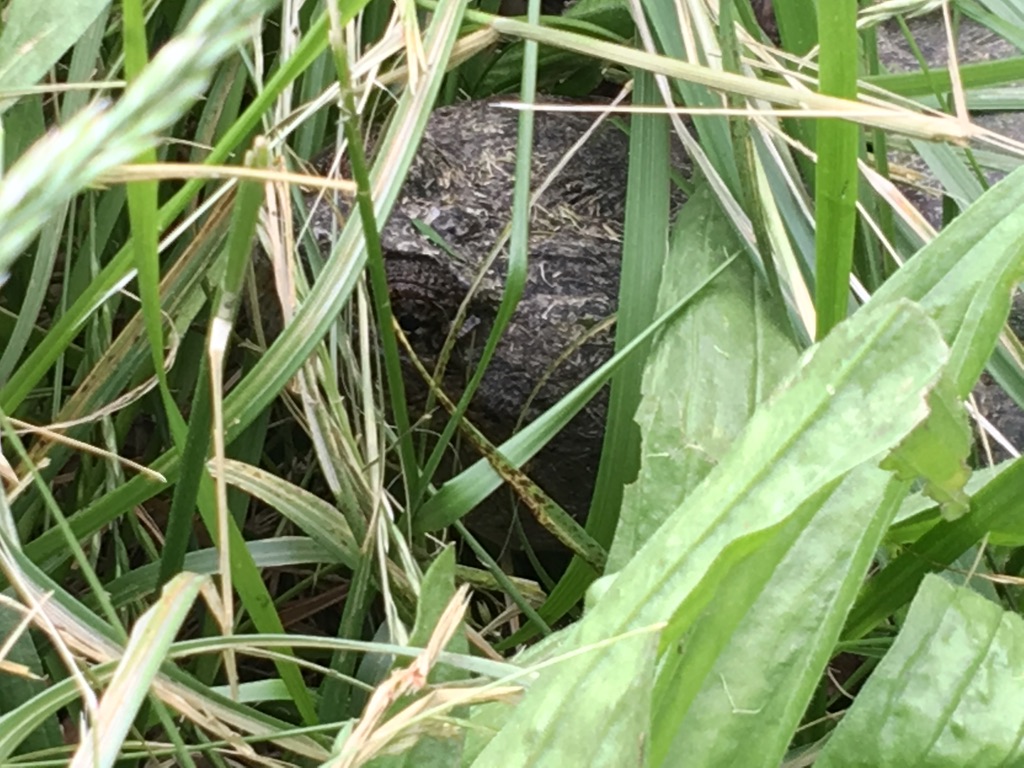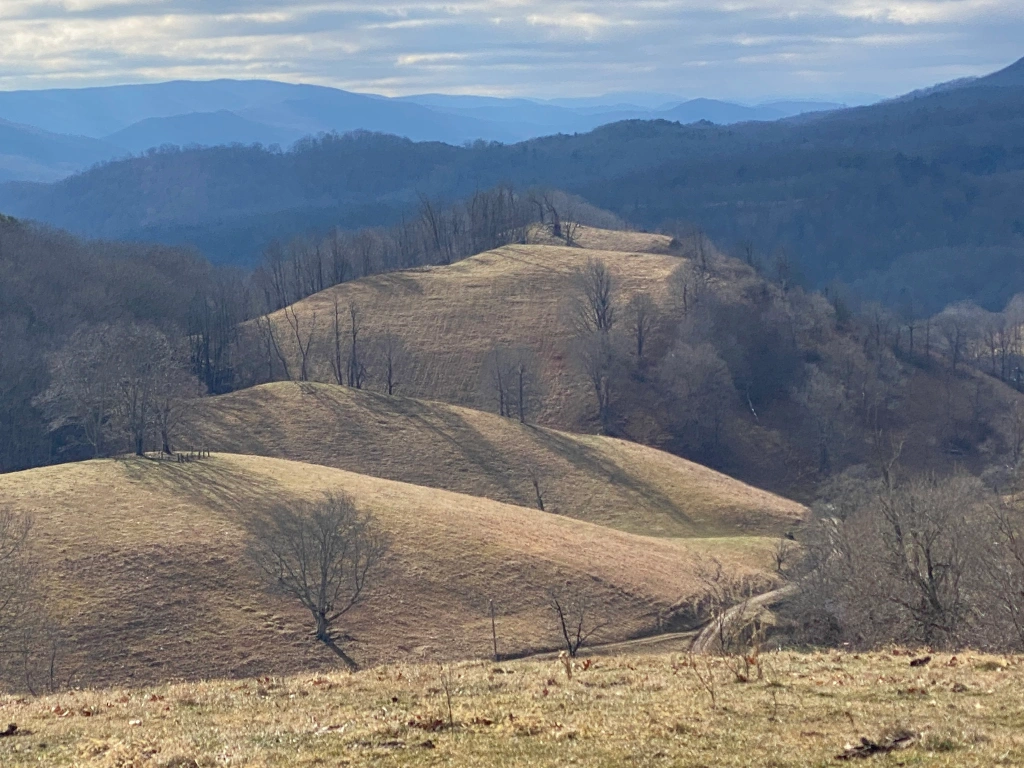
We are in Vinegar Hollow for our New Year’s reset. The mountains are quiet, the stars are multitudinous at night, and one can wander, browsing the Earth–like cows, finding nourishment from the landscape. The woodchopper and the naturalist writer lean in to their favorite activities, all the while keeping the fire going.

I like to observe the waking up of the day here in the hollow from my desk in front of the sliding glass doors. Although it’s a cold spot in the winter, I can survey the scene as I take my first sips of coffee. The cloud cover on January 1st was a moody blue-gray (not unlike the shoulder feathers of the Blue Jay, see below) intermixed with eyelets of blue. The first visitors to the garden yard are Blue Jays. I have never been particularly attentive to Blue Jays, dismissing their squeaky voices in favor of the smaller more delicate songbirds. However, after several mornings of Blue Jay watching, I become full of admiration for their grace and energetic behavior. Each morning a flock of about 9-10 birds arrive in a great hurry. They forage around the yard, pecking like chickens at leaf piles. Each peck tosses up a dance of leaves. They may be searching for remaining beechnuts because 2023 was a mast year, meaning there was a bumper crop.

After a certain amount of ground-level activity they swoop up onto the slenderest branches of the beech and the wispy dangling branches of the red spruce, pause a bit, and then plummet to the ground for more foraging. Their choreography is erratic and hectic. Three or four of them visit the small watering hole/bird bath formed by the roots of the beech. Usually there is water in it, which small songbirds regularly visit in the summer, but now after a droughty fall, it is dry. After the Blue Jays are well into their morning routines, European Starlings in small murmurations appear in the background swooping en masse over the garden yard into the orchard meadow. My eyes are dazzled by the almost vertical falls of the Blue Jays in the forefront of my field of view and the horizontal movements of the European Starlings in the background. The arrivals and departures of the Blue Jays are sudden. In one moment I see them in the distance swirling together into the walnut tree in the sinkhole by the driveway, an astonishing display of speedy choreography. In the next they are off, with the European Starlings following in the same direction. And soon they are all back for round 2, sometimes round 3, but after these excursions they are gone for the day, probably off to the various water troughs placed around the farm, which are gravity fed by overflow from the spring on the mountain.
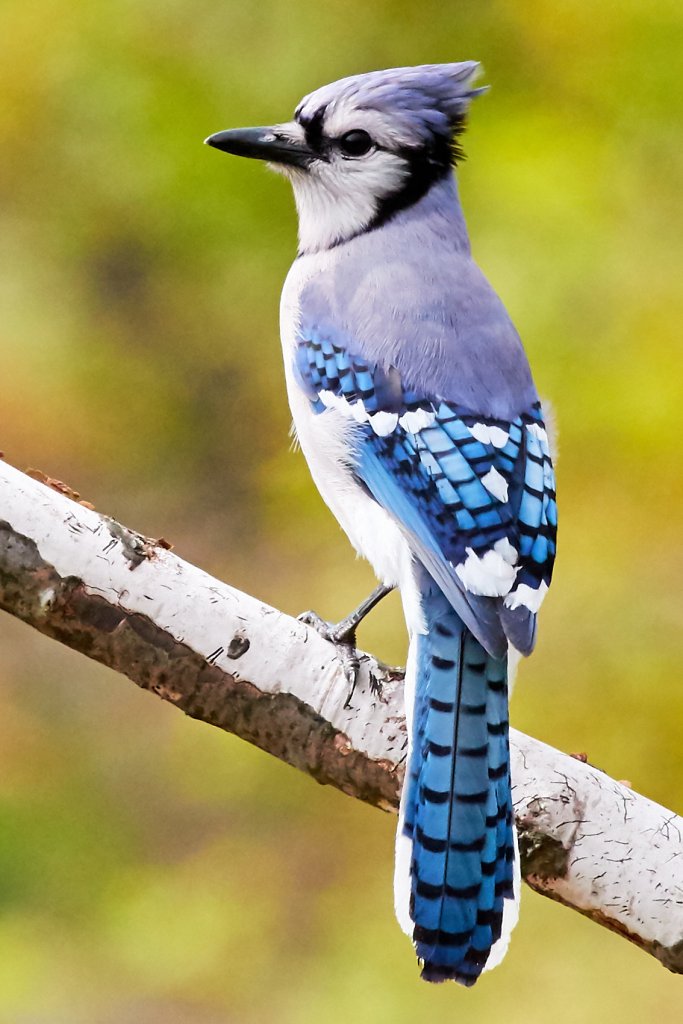
The Blue Jays looked identical to me, which I knew was a failure in discernment. Nature does not create generic organisms. Every individual is uniquely different. So I decided to study, with the aid of the photograph above, the plumage of the Blue Jay. On the photograph I could observe at my leisure the dramatic feather patterns–the black bars that separate rectangles of the different shades of lavender-blue, the white belly and “underpants” ( birder term), and the white accents at the ends of certain feathers. Google helped me find a youtube video called “How to Tell Blue Jays Apart,” which beautifully illustrates how the black markings around the eyes and on the head enabled “Lesley the Bird Nerd” to distinguish the individuals at her bird feeder. She also noticed idiosyncratic traits like wing flicking. In other research I learned that Blue Jays communicate via a huge number of calls, among them 1) the jeer, 2) the pump handle, 3) the bell, and 4) various alert calls, like the toolili, which sounds quite melodious. Discerning bird calls by ear has never been my forte, however.
The days pass quickly. On the first day we visit the graveyard on top of Pine Tree Hill, which needs a lot of maintenance for the next round of inhabitants. We find strands of rusty barbed wire that have broken and are flopping about, certainly a hazard for the cows. We see the evidence of one cow who has made inroads into the plot searching for forbidden fruit. With fingers frozen in the cold, we try to fasten strands of barbed wire into the gaping holes. I have ordered primrose seeds (the common primrose, the oxlip, and the cowslip) and look forward to bringing the seedlings in the spring. On day 2 we walk to Stark’s Ridge to see the remaining cucumber tree of the pair that dominated the hilltop for so long.

Its partner is on the ground. On day 3 we walk straight up the Peach Tree Hill and then down into the snake woods, always a place of mystery and discovery. The path winds around sink holes filled with leaves, and vines climb to the tops of slender trees reaching for the light, threatening to and in some cases dragging them down. As a partisan of trees, I am dismayed by the power of wild grape vines to dominate trees. Sometimes two or three trees are tied together at their tips by vines.
The New Year’s reset is brief. On day 4 we have household maintenance issues and must go to town on errands. Day 5 is departure time. It is best to leave early for the 9-hour drive back to Ithaca, but there is a snafu. A pick-up truck with a large attachment has blocked the driveway by the barn. My husband went out to investigate and I continued indoor tasks. When he did not reappear and I heard animated conversation, I investigated. The large attachment was a cattle hoof trimming apparatus. It is a unique structure, partly devised by the owner himself, an exuberant person who went about his work while chatting enthusiastically despite the frosty air.

Mike’s cows do not in general need hoof trimming, a practice more common in dairy cows. This cow belonged to his grandson and had been transported from Stanton to Mustoe to be closer to the owner of the device. I missed the actual ‘operation’ but apparently the cow is coaxed into the apparatus, fastened in tightly, and then turned on her side so that the hooves are presented to the trimmer for easy trimming. The cow walks off eventually, presumably feeling much more stable on her feet.
Sadly I missed this drama, but I noticed something that I would not have seen if the cow trimming machine had not been blocking our path. As I opened the gate from the garden area to the pasture, I observed that the lichens that copiously colonize fence rails (epiphytic lifestyle) on the farm were covered in frost. In my research for a book called Moss and Lichen to be published by Reaktion Books in winter/spring 2024, I came across several studies about the ability of lichens to harvest water through ice nucleation. At higher temperatures formation of ice crystals requires nucleating particles, in this case those found on the ruffled surface of the lichens. It was about 28–30 degrees F.

Soon I was going from one fence rail to another trying to capture the beauty of the ice-crystal-encrusted lichens. Lichens are often described as “encrusting” their substrates, but here they were being encrusted themselves with little turrets of crystals showing the etch lines of their construction. There are biological reasons why nature specializes in encrusting topographies. Lynn Margulis, famous for greatly expanding our view of symbiosis, offered the statistic that the world contains 1014 tonnes of lichens (Symbiotic Planet, 1998), though noting that it is “notoriously” hard to provide an accurate estimate of the total mass of lichens in the world. They live everywhere on many substrates, natural and manmade, and frequent places not easily visited by humans. Although adapted for drought tolerance, lichens need water to photosynthesize and grow. Soon the morning sun would be hitting the fence rails, melting the ice crystals and immersing the lichens in films of water.

Sometimes I learn about the hollow through the eyes of Mike, who as I have mentioned grazes his cattle at the farm. This trip he tells me that he was near the top of the Peach Tree Hill on his four-wheeler checking on his cows, when he observed a curious tableau. A mama bear was halfway down the hill on the eastern flank with several cubs, heading over to a convenient gate into the Stanley Hiner place. Several calves began chasing the cubs, who, seemingly enjoying the chase, would stop and start. Each time the cubs stopped, the calves stopped. Meanwhile Mama bear left her cubs to play and headed over to Stanley’s place. Mike said that Mama bear would find her cubs in due time after the play date.
I could come here for a thousand years and always find something arresting to observe in the beauty and behavior of the multitudinous life forms on Earth.













